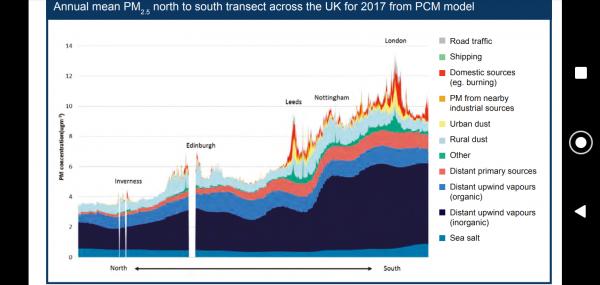| Home |
| Green Building Bible, Fourth Edition |

|
These two books are the perfect starting place to help you get to grips with one of the most vitally important aspects of our society - our homes and living environment. PLEASE NOTE: A download link for Volume 1 will be sent to you by email and Volume 2 will be sent to you by post as a book. |
Vanilla 1.0.3 is a product of Lussumo. More Information: Documentation, Community Support.

Posted By: WillInAberdeenThey could have examined the pros/cons of the upcoming EU 'ecodesign’ smoke reduction standard, supposedly intended to improve on the existing DEFRA smokeless certificates by 80%; or the upcoming ban on under-seasoned firewood and bagged coal; or compared SE England with other parts of UK in terms of smoke and traffic emissions. They could have discussed that a properly insulated house doesn't need a multi-kW room heating stove. They could have discussed that air pollution in the UK is now a small fraction of what it was a few decades ago, a huge success. They could have looked at whether the electric vehicle target will reduce pm2.5 or not. But that would have made their story too complicated!
Posted By: tonyI have been saying this for 25 years, taken a lot of flack over it too.Yep, but we still get loads of discussion of using wood burners here where, IMHO, it should be considered off topic. I'd agree with WiA that this isn't a great article, it just caught my eye straight after reading a couple of stove threads.
Posted By: tonyWhere are distant upwind vapours coming from, clearly they are massively increased in countryFrom the end of the BBC article WiA cites:
But one irony: much of the UK's pollution originates in mainland Europe, so we really need neighbouring countries to join the effort.Of course prevailing winds are in the opposite direction.
Posted By: tonyWhere are distant upwind vapours coming from, clearly they are massively increased in country
Posted By: WillInAberdeenIt's the Firth of Forth.
Posted By: Cliff PopeThe Guardian testers must have selected stoves and fireplaces with very poor chimneys.
We don't get a rush of gases into the room when we open the Rayburn door to put more wood on - quite the opposite. The chimney draught sucks in more air.
Posted By: Cliff PopeThe Guardian testers must have selected stoves and fireplaces with very poor chimneys.
Posted By: RobL
Particulate sensors are pretty cheap now - eg this one seems very capable. Is it worth automating turning mvhr down when the inlet particulates are high ?
Posted By: tonyIf you can smell it then you have particulates too and the smaller they are the more dangerous.
Posted By: jms452We sometimes smell wood smoke when refilling a stove (even with a good draw due to turbulence etc.)Lately been lazily lighting using cheap fire lighters. Curious that, ten mins after lighting but not before, when all is blazing and drawing merrily, the stink of paraffin wax in the room.
Posted By: JontiIt seems every so often there will be some article or other about the dangers of wood burning stoves that pops up in the press. Yes, there are problems with burning wood but if the wood is dry (below 20%) and the stove properly installed then maintained the negatives are very much reduced.
Posted By: JontiIt seems every so often there will be some article or other about the dangers of wood burning stoves that pops up in the press. Yes, there are problems with burning wood but if the wood is dry (below 20%) and the stove properly installed then maintained the negatives are very much reduced.
The main problem that should be addressed but isn't is not the heat source but rather the need for one. If houses were properly built and maintained then the need for extra heating would be minimal. Of course this would mean proper control of the standard of construction which is not going to happen.